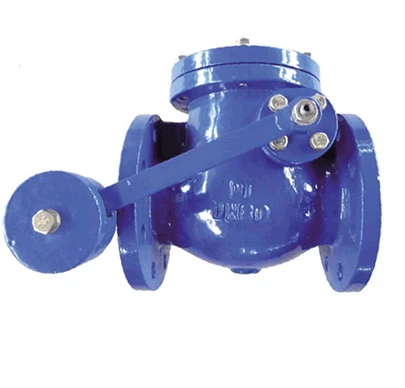des . 20, 2024 11:17 Back to list
Stainless Steel Ball Check Valve for Reliable Leak-Proof Performance and Flow Control
Understanding Stainless Steel Ball Check Valves A Comprehensive Overview
In the realm of fluid control systems, check valves play a pivotal role in ensuring the unidirectional flow of liquids and gases. Among the various types of check valves, stainless steel ball check valves stand out due to their versatility, durability, and reliability. This article explores the design, working principles, applications, and advantages of stainless steel ball check valves.
What is a Ball Check Valve?
A ball check valve is a type of check valve that utilizes a spherical ball as its closing mechanism. When fluid flows in the intended direction, the ball is lifted off its seat, allowing the flow to pass through. Conversely, if the flow attempts to reverse, the ball is pushed back into the seat, creating a seal that prevents backflow. This simple yet effective design makes ball check valves ideal for various applications.
Why Choose Stainless Steel?
Stainless steel is the preferred material for manufacturing ball check valves for several reasons
1. Corrosion Resistance Stainless steel is highly resistant to corrosion, making it suitable for handling various fluids, including water, chemicals, and corrosive substances.
2. Durability Stainless steel's robust nature ensures that ball check valves have a long service life, even in harsh environments.
3. Pressure and Temperature Tolerance Stainless steel can withstand high pressures and temperatures, making it ideal for industrial applications.
4. Low Maintenance The durability and resistance to wear and tear mean that stainless steel ball check valves require minimal maintenance over their lifespan.
Design Features
Stainless steel ball check valves typically come with a few key design features
- Ball Geometry The spherical ball is precisely machined to ensure a tight fit against the valve seat, providing an effective seal when closed.
- Spring Mechanism Some designs incorporate a spring mechanism that aids in the valve's closure, allowing it to respond quickly to changing flow conditions.
- Inlet and Outlet Connections Stainless steel ball check valves can be configured with various connection types, including threaded, flanged, or welded options to facilitate easy installation in existing systems
.stainless steel ball check valve

Applications
The versatility of stainless steel ball check valves makes them suitable for numerous applications across different industries, including
- Water Treatment In water treatment facilities, ball check valves prevent backflow and ensure that treated water flows in the desired direction.
- Chemical Processing The corrosion resistance of stainless steel makes these valves ideal for handling aggressive chemicals in the processing industry.
- Food and Beverage Stainless steel is widely used in the food and beverage industry for maintaining hygiene and preventing contamination.
- Oil and Gas In oil and gas operations, these valves help manage fluid flow, ensuring safety and efficiency in pipelines.
- HVAC Systems Ball check valves are also used in heating, ventilation, and air conditioning systems to maintain proper fluid dynamics.
Advantages of Stainless Steel Ball Check Valves
1. Enhanced Performance The smooth surface of stainless steel provides optimal flow characteristics, reducing pressure drops and improving overall system efficiency.
2. Versatile Applications Given their wide range of operating conditions, stainless steel ball check valves can be employed in multiple industries without compromising performance.
3. Cost-Effectiveness While the initial cost may be higher compared to other materials, the long lifespan and low maintenance requirements of stainless steel ball check valves make them a cost-effective choice in the long run.
4. Environmental Impact Stainless steel is recyclable, contributing to sustainable practices in industrial operations.
Conclusion
Stainless steel ball check valves are an essential component in modern fluid control systems, offering reliability and efficiency across various industries. Their durable and corrosion-resistant properties make them particularly appealing in applications where safety and performance are paramount. By understanding their design, functionality, and applications, engineers and operators can make informed choices when selecting the right check valve for their needs. As industries continue to evolve and demand higher performance standards, stainless steel ball check valves will undoubtedly remain a vital solution in fluid control technology.
Share
-
Reliable Wafer Type Butterfly Valves for Every IndustryNewsJul.25,2025
-
Reliable Flow Control Begins with the Right Ball Check ValveNewsJul.25,2025
-
Precision Flow Control Starts with Quality ValvesNewsJul.25,2025
-
Industrial Flow Control ReliabilityNewsJul.25,2025
-
Engineered for Efficiency Gate Valves That Power Industrial PerformanceNewsJul.25,2025
-
Empowering Infrastructure Through Quality ManufacturingNewsJul.25,2025